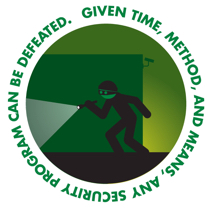Supply Chain Security
In many cases Supply Chain theft offers perpetrators high rewards with relatively low risk. When perpetrators can walk into distribution centers and/or trucking terminals, hook up tractors onsite merchandise-full containers, which may be loaded with over a million dollars of product, and not get caught, something is wrong. Try taking the above scenario and multiply it by two for a single location, and then do the math. All too often security systems and security programs at these locations are little more than window dressing that may produce some after-the-fact evidence. This means the bad guys are not required to even use stealth.
With the advent of “just-in-time” inventory strategies, more and more goods are in motion. Just-in-time inventory strategies are aimed at taking pressure of operating budgets and providing greater financial liquidity, assuming containers don’t go missing.
In the wake of these crimes, we often find security programs that are more symbolism than substantive. For example, video surveillance systems are installed, but they lack video analytics and no one is watching the monitors I real-time.
 Any security program must reflect the fundamentals of crime prevention as depicted in the graphic here. The more time the perpetrator has to commit the crime, the less he is deterred. That is why security programs are intended to cause delay. Yet, time after time we see distribution center penetrated through the roof, tractors stolen and hooked up to containers and successful escape, all of which take considerable time.
Any security program must reflect the fundamentals of crime prevention as depicted in the graphic here. The more time the perpetrator has to commit the crime, the less he is deterred. That is why security programs are intended to cause delay. Yet, time after time we see distribution center penetrated through the roof, tractors stolen and hooked up to containers and successful escape, all of which take considerable time.
Although each case is different and unique, another frequent common denominator is “inside collusion.” This reality is often a reflection of inadequate screening during the hiring process as well as inadequate training and supervision. The cost of reaction, both direct and indirect costs, almost always significantly exceed the costs of reasonable prevention. In other words, one may need to allocate sources to prevent security breaches up-front, or pay double in the aftermath.
The most logical and cost effective way to proceed, going forward, is to commission a thorough security assessment. That is where SMSI Inc. comes in. The best time for an assessment is before there is a loss. However, as forensic security experts our work with plaintiff and defense law firms, often involves retrospective security assessment after-the-fact. It is for this reason we made the previous statement the “reaction” is almost always much more costly than prevention, especially when one considers the indirect cost of loss. Remember, prime targets are electronic products, pharmaceuticals and tobacco products. Many of these heists are specifically targeted to fulfill an order for a specific buyer. In other words, they are not random spur of the moment crimes.
